2024 June 19 evening
2024 June 19 evening
Tomorrow, Thursday June 20, the Right Ascension (J2000.0) of the Apparent Sun will be 06h 00m at 1:51 pm PDT. Welcome to Summer! (Botanists might also note that today, the last day of Spring, appropriately, the flower Clarkia amoena can be found in Uplands Park in the area that is being “restored”. I don’t know if it got there naturally, or whether it was introduced as part of the restoration process.]
Most viewers of this site will be aware that it is not always easy to identify invertebrates accurately. We do our best here, but we have a policy that it is better to say “dunno” than to get it wrong. For example, in spite of the obvious superb quality of Ian Cooper’s photographs that follow, even the experts are not absolutely certain whether the following four photographs are Clubionidae or Gnaphosidae. Either way, enjoy!
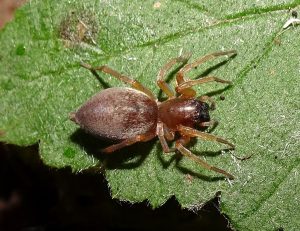 Spider (Ara.: Clubionidae or Gnaphosidae) Ian Cooper
Spider (Ara.: Clubionidae or Gnaphosidae) Ian Cooper
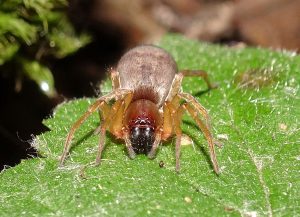 Spider (Ara.: Clubionidae or Gnaphosidae) Ian Cooper
Spider (Ara.: Clubionidae or Gnaphosidae) Ian Cooper
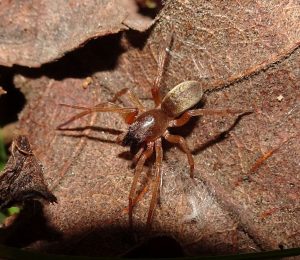 Spider (Ara.: Clubionidae or Gnaphosidae) Ian Cooper
Spider (Ara.: Clubionidae or Gnaphosidae) Ian Cooper
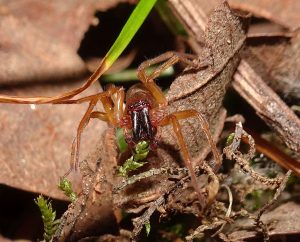 Spider (Ara.: Clubionidae or Gnaphosidae) Ian Cooper
Spider (Ara.: Clubionidae or Gnaphosidae) Ian Cooper
{This reminds me, writes Jeremy Tatum, how can you tell the difference between a professional expert and an amateur dilettante? One clue is that the former is sometimes unable to be sure of the identification of an organism; the latter is always confidently certain. I wish birders understood that!]
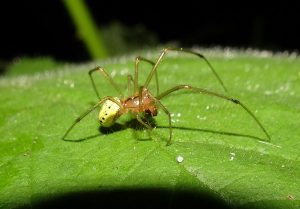 Enoplognatha ovata (Ara.: Theridiidae) Ian Cooper
Enoplognatha ovata (Ara.: Theridiidae) Ian Cooper
Ian writes: This one must be eating well. It’s the largest Enoplognatha ovata I’ve seen so far this season.
There are several similar species of snakefly, distributed through two families, and we don’t always try to identify them. But, writes Jeremy Tatum, because of the quality of the photograph, I feel fairly sure that this one is a female Agulla assimilis.
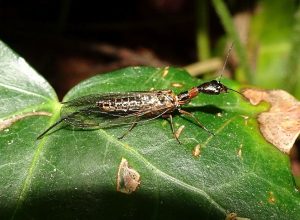 Female Snakefly Agulla assimilis (Raph.: Raphidiidae)
Female Snakefly Agulla assimilis (Raph.: Raphidiidae)
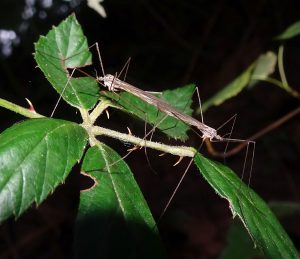 Two nematoceran flies in copula (Dip. – Nematocera) Ian Cooper
Two nematoceran flies in copula (Dip. – Nematocera) Ian Cooper
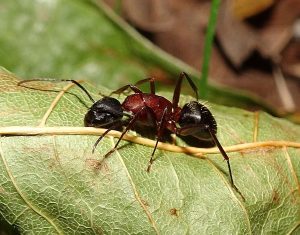
Camponotus vicinus (Hym.: Formicidae) Ian Cooper
Butterflies and, to a lesser extent, dragonflies are still scarce. Observers are reduced to reporting single sightings, or first-of-the seasons, of normally common species. Thus, Wendy Ansell reports a single Western Tiger Swallowtail and one or perhaps two Lorquin’s Admirals from Rithet’s Bog on June 19, while Jeff Gaskin reports his first-of-the-year Western Pondhawk at Caleb Pike in the Highlands on June 18.
Jeremy Tatum writes: Top of Mount Tolmie, 5:15 pm June 19. There were three Western Tiger Swallowtails and one Pale Tiger Swallowtail nectaring on the Philadelphus shrub, and a Painted Lady on the nearby blackberry blossom, all in pristine condition. It is such a long time since I have had a good look at a butterfly that I had forgotten just how beautiful they are. I stood there for half an hour just watching them in awe and delight.
